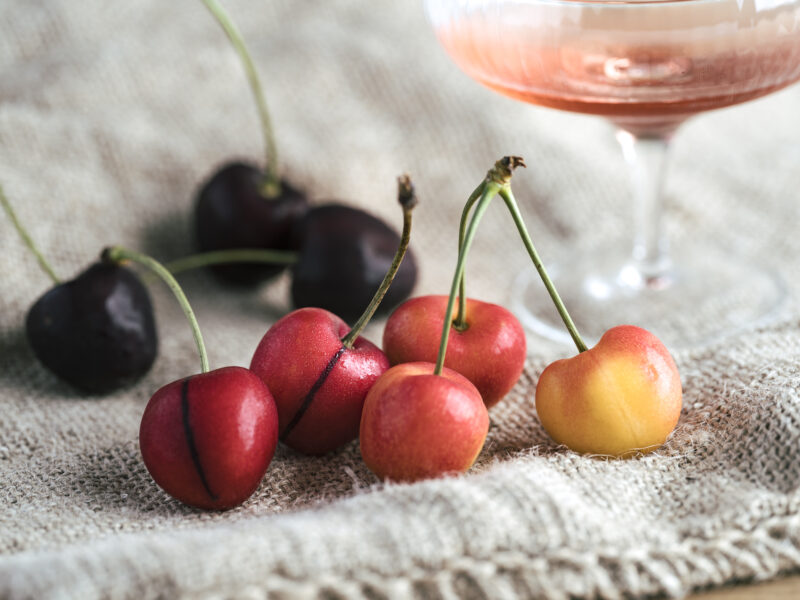Cherry harvest at the Engelendael Farm
We’re in the middle of cherry harvest season; time to indulge in this delightful, sweet fruit. But do you know what it takes to grow this delicacy? I decide to explore the ins and outs of cherry growing and to do so, I head to the Meetjesland, the region in the north of Belgium, where the Engelendael Farm throws its doors wide open for us.
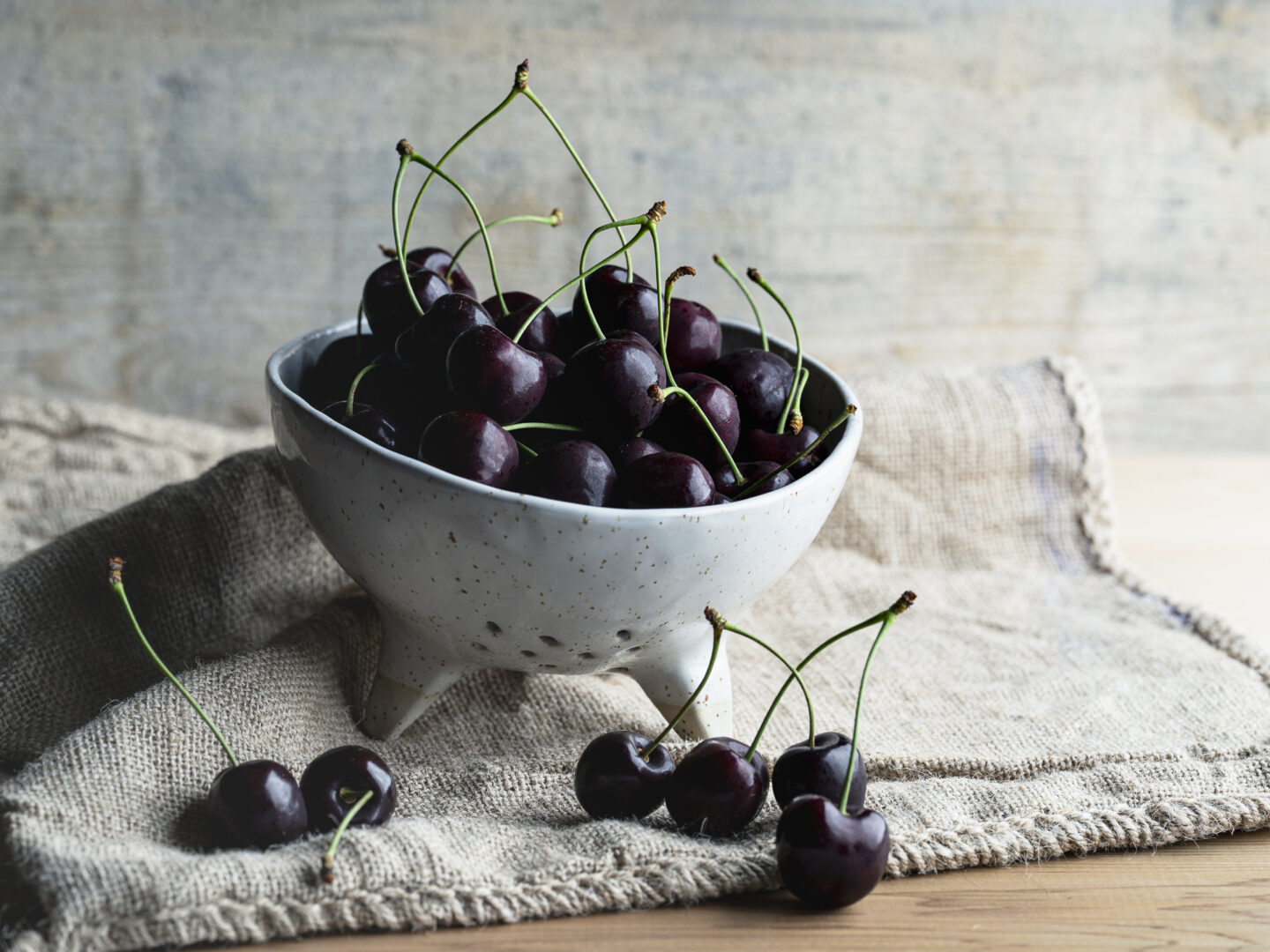
Engelendael Farm
We drive through the beautiful Flemish polders of Sint-Laureins and arrive at the Engelendael Farm where we receive a warm welcome from the Govaert-van de Bilt family. The farm, founded in 1697, is primarily an agrifarm. Marc and Nicole are passionate entrepreneurs and decided to diversify. In addition to their land, they now manage 3 hectares of cherry orchards. Furthermore, they renovated the old barn and transformed it into a magnificent, high-class banquet hall. Their children Stéphanie and Laurent help out in the family business, ensuring the eighth generation of the Engelendael Farm.
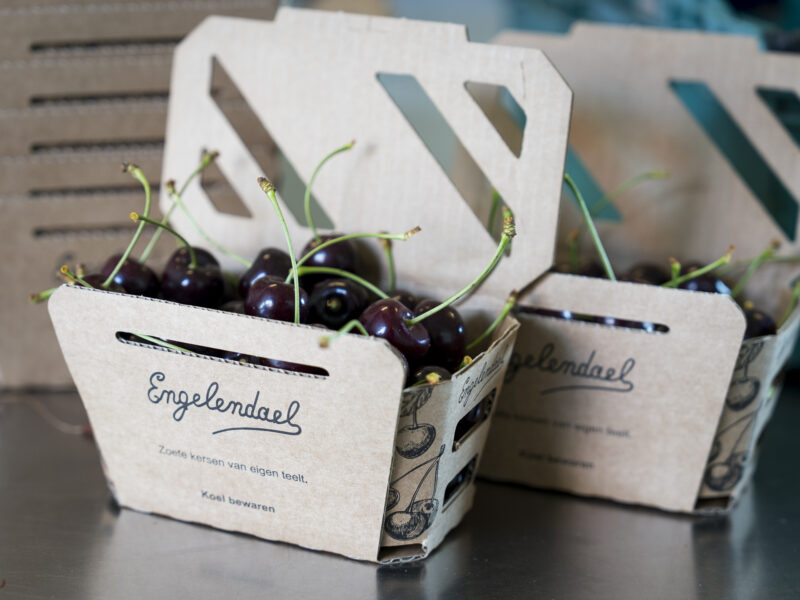
Cherry farming
Growing cherries, where do you start?
I put the question to Marc Govaert. It starts with a vision, a passion, a conviction. Then comes hard work and perseverance. Growing cherries in heavy polder soil is not obvious, but the polders are in Marc's genes. With good drainage it will work, he tells the sceptics.
The first crop
Marc and Nicole drive to the province of Limburg to buy two-year-old low-stem grafted cherry trees of different varieties. The first planting takes place in 2002. Three years later, it’s time for the first harvest. But disaster strikes. It rains relentlessly and the cherries are rotting on the trees. Marc does not give up and decides to cover the orchard. In the years that follow, the family no longer suffers a rained-out orchard with zero balance. The trees grow and the orchard expands. There are about a thousand trees per hectare and the orchard now totals 3 hectares.
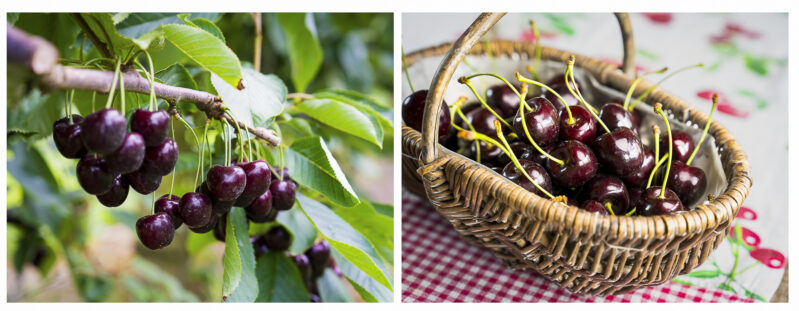
Philosophy: you know what you eat
Nicole loves sayings. One of them is "you know what you eat," and it reflects the philosophy of the house in a nutshell. First and foremost, Engelendael strives to produce a premium quality niche product. Moreover, the in-house outlet ensures that the producer-consumer supply chain remains short. This benefits both the product and the consumer. Close connection with the abundance of flowers around the orchard and the beautiful surroundings brings peace and well-being. A visit to Engelendael is not just about buying the best cherries in the region. Rather, it is an invitation for a wonderful outing to the unique Meetjesland, close to the border with the Netherlands.
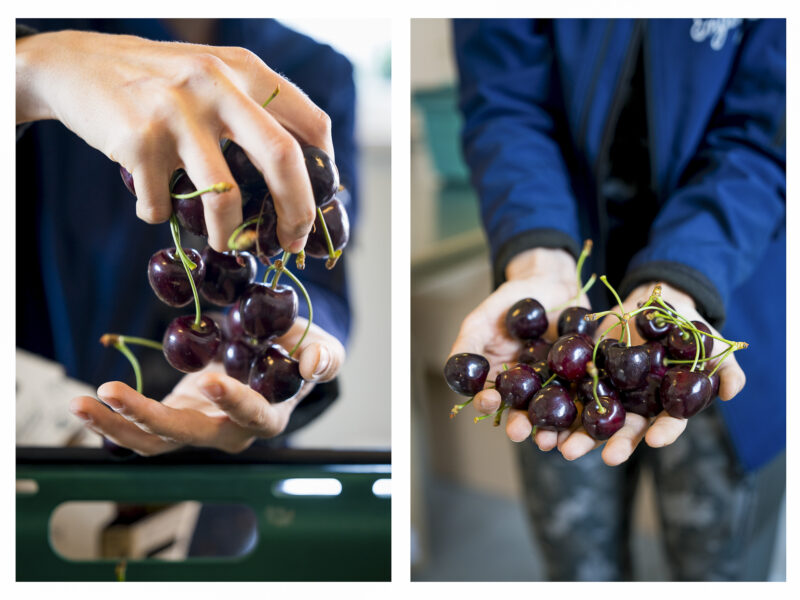
The weather and pests: the biggest challenges
Marc and Nicole are used to working in and with nature. After all, in addition to the cherry orchard, they run a large agribusiness. But cherry growing has its own specific challenges. Responding to them with knowledge and at the right time makes the difference between a good or failed cherry harvest.
Frost: the enemy of blossoms
A late frost can completely destroy a crop. All fruit growers have to contend with this and are powerless against the whims of nature. Marc explains to me that you can place fires in the orchard as vintners often do, but the cost and effort are high for limited success. It is better to grow different varieties. Not all cherry varieties come into bloom at the same time, and this way, part of the orchard can escape a late frost.
Pests
The main pest is the cherry fly. It lays its eggs in half-ripe cherries, just below the skin. The larvae feed on the flesh and pose a threat both to the fruit and to the tree itself. The cherry fly can destroy an entire crop in a short time and is managed proactively.
There are also the black lice that attack the leaves but the Asian fruit fly, drosophila suzukii, is the most recent challenge. The invasive pest pierces a hole in the fruit that has just ripened and lays eggs right in it. Within a week, the cherries are full of larvae and the harvest is lost.
Rain and mold
I already told you that Marc and Nicole suffered heavily from the effects of rain in the very beginning of their cherry growing. Marc explained to me that moisture runs along the stem into the upper cavity of the cherry. There it stagnates and causes harm to the fruit. In just two days, the cherry has rotted. Furthermore, too much moisture also brings the risk of mold.
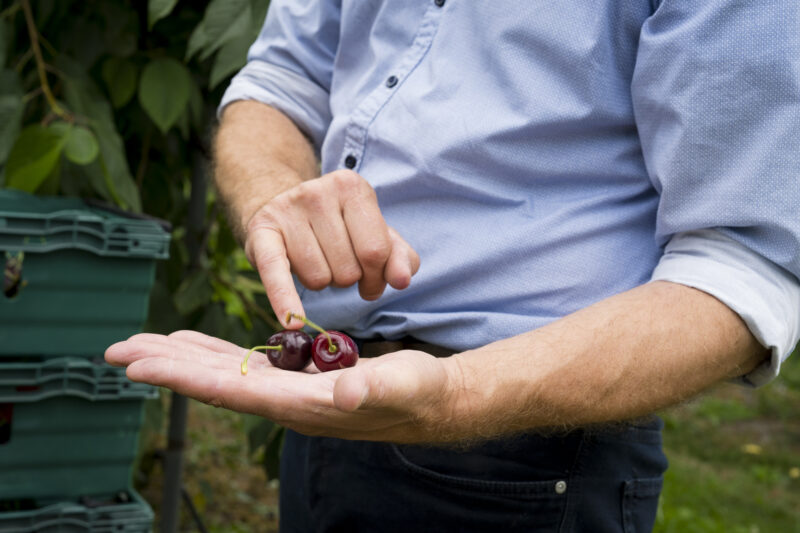
The canopy: an expensive but necessary solution
Early on, Marc comes to the conclusion that a canopy is necessary to make the orchard profitable. The system consists of a metal structure with a woven foil cloth and a net that spans the trees and protects the cherries from rain and birds from June until harvest. The system is reminiscent of an open greenhouse. The rain cover allows for picking cherries in all types of weather.
The canopy is nevertheless capital intensive. Every year it is reinstalled after the period of pollination to be taken down again after harvesting. While the metal structure can stand for more than 20 years, the nets and tarps have to be renewed earlier. Marc explains that since the first installation in 2007, he has already replaced them twice in 15 years.
Irrigation
A cherry tree needs enough water to grow and flourish, and the grower must find the very precise balance between fruit and moisture. Give the tree too much water and the delicate cherry bursts. Marc and Nicole achieve the right balance with a drip irrigation system that precisely controls the flow of water throughout the orchard. They collect rainwater for this purpose from all the roofs on the farm and recycle it through the irrigation system.
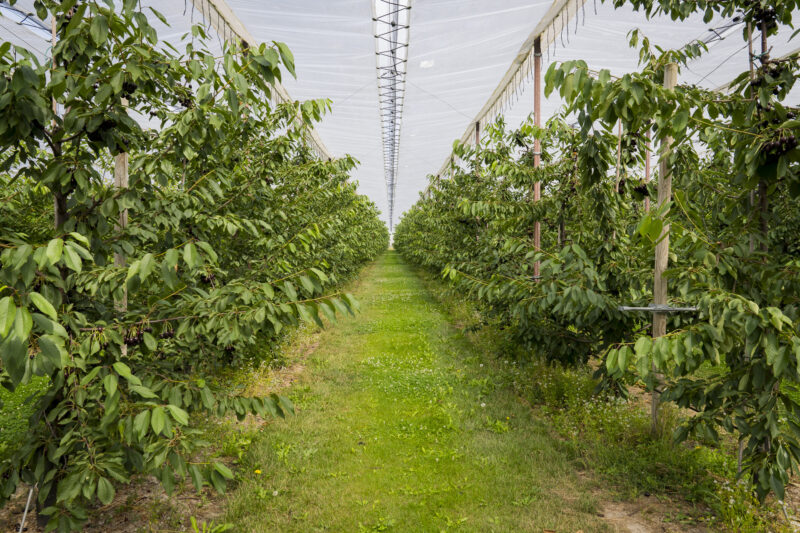
Climate Change
It's getting warmer and that has far-reaching consequences on cherry growing. The advantage is that we can eat cherries earlier in the year and the grower has less to contend with mold. Unfortunately, the disadvantages are more significant. For one thing, there is the rise of invasive insects such as the Asian fruit fly, but a bigger problem is the decline in the number of bees and bumblebees that are crucial for pollination. At Engelendael, local beekeepers place their hives in the orchard for annual pollination, but the number of active bees is steadily declining. Marc and Nicole come to the beekeepers' aid and sow the edges of their croplands with fields of flowers. Borage, marigolds and cornflowers attract bees and bumblebees while offering beauty to visitors. On top of that, Marc now keeps his own beehives in cooperation with a beekeeper friend.
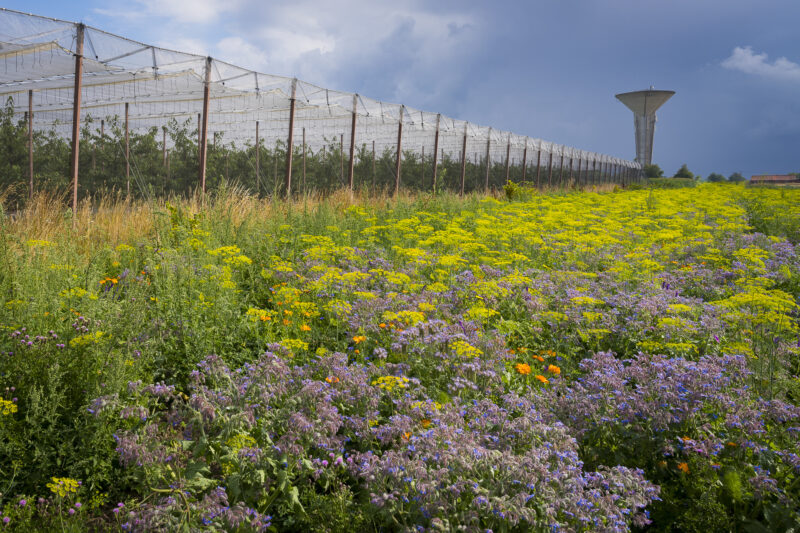
Fighting pests and disease
Engelendael practices integrated farming and uses natural enemies to control diseases and pests. Further challenges are met with pesticides from the phyto-sector. The family engages in conscious agriculture but does not pursue organic farming.
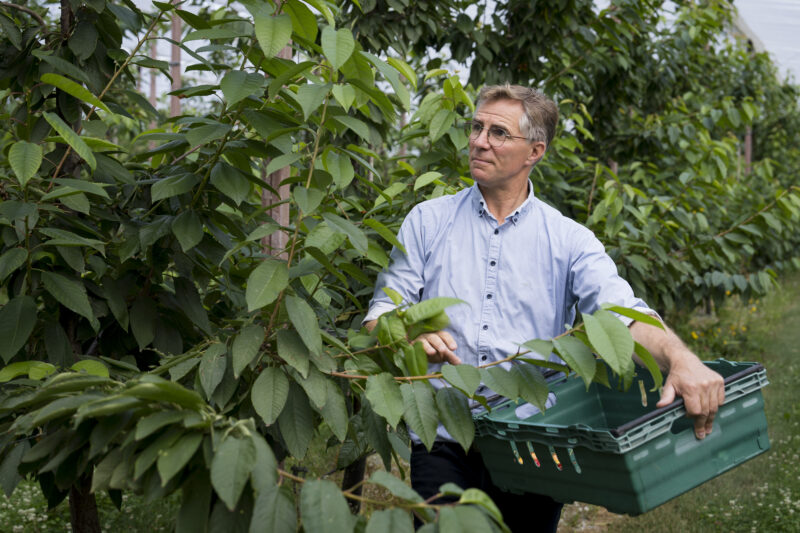
Orchard farming: a labor-intensive sector
It’s a busy time at the Engelendael Farm. We are in the middle of the harvest season that runs from July to August. But the efforts start much earlier in the year and all the work is done manually.
Pruning
The season begins with spring pruning in April. Marc and Laurent take on that task, although son Laurent appears to be an expert in the field. In fact, this year he did the pruning entirely on his own. Next is the summer pruning in September.
Maintenance
During the months of May and June, the orchard is carefully maintained. In June, after pollination, Marc reinstalls the rain cover and netting with the help of his son Laurent. In September, after picking all the cherries, they remove them again. This is followed by checking and cleaning the nets and tarps. The canopy is now ready for storage for the winter.
The trees also need fertilization and nutritional elements such as magnesium and sulfur. Are the leaves paler in color and showing darker veins? The tree is clearly lacking magnesium. As CO2 emissions from cars drop, there is in turn a shortage of sulfur in field, vegetable and fruit crops.
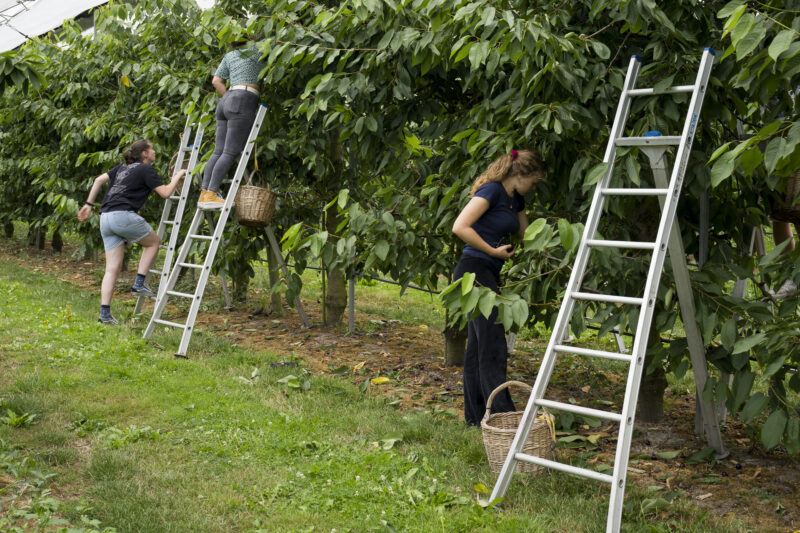
Harvesting
The orchard has only low-stem trees, which makes harvesting very easy. A small step ladder is only required for the highest branches and two people can pick cherries simultaneously on the same tree. Nevertheless, the work is intensive, and the picker must remain very attentive.
The work is done by students as a summer job. The number of hours they pick depends primarily on the weather. On hot days, picking begins early in the morning. Then, it is still cool for the workers and the cherry is crisp and thus of better quality. As Nicole says, wake up early and shine before the sun does.
The students each have their own number so that Marc can give feedback on the work they do. Were the right cherries picked with respect to size and ripeness? What quantity was picked?
Some students come back year after year to help during the cherry harvest, and I understand why. While the nature of the work requires a lot of effort, the Govaert-van de Bilt family takes good care of their workers. Upon our arrival in the morning, the pickers were sitting in Nicole's beautiful garden enjoying coffee and breakfast pastries. Who wouldn't want such a summer job?
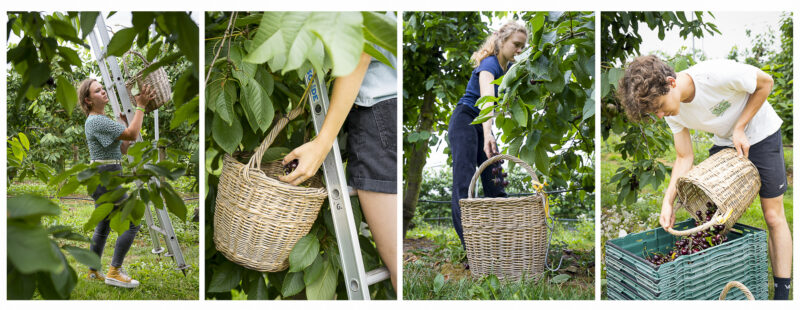
Processing
After picking comes processing. Cherries are delicate fruits and must be handled with great care. At Engelendael, sorting and packing is done manually. Daughter Stéphanie is very attentive and immediately picks out cherries that are either too small or not ripe enough. Those fruits go into separate bins and are destined for jam.
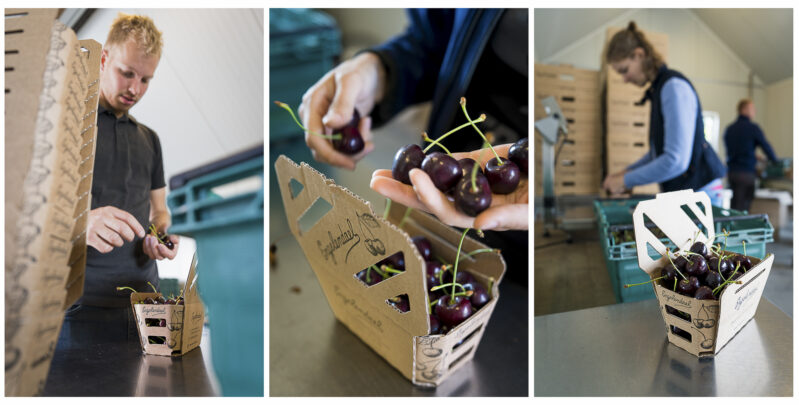
Distribution
You won't find cherries from Engelendael Farm in the supermarket. The fruit is sold at the farm, immediately after picking. When mechanically sorted and sold by auction, the cherries get a lot of shocks and bumps. They lose some of their freshness very quickly. At Engelendael, this is not the case. With direct producer-to-consumer sale and manual processing, Marc and Nicole offer a fresher, less handled and more beautiful product.
You'll find Nicole under the tent next to the orchard. She takes charge of sales and, regardless of how busy it is, she always takes time for a chat with her loyal customers.
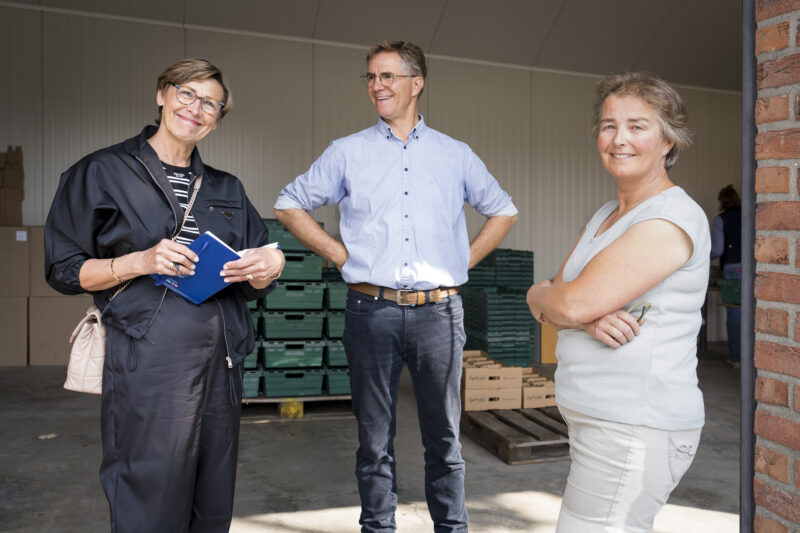
Which cherries are the best?
Which cherries you like best is a matter of personal taste. Usually, cherries with crunchy skin are people’s preference. Other factors are the degree of acidity, the texture and the complexity of the flavor. For example, the variety Karina is not suitable as a cherry to eat by itself, but it is perfect for jam.
Marc and Nicole have planted several rows of Bigarreau Blanc-Rose in the new orchard. A popular name for them is crackers or white bellies. The orange-colored cherries with pale yellow blush have a peachy taste and are very fleshy. The variety is hard to find and is very popular with connoisseurs.
In addition, Marc planted a row of the new Natalie cherry as a personal challenge. The fiery red cherry has a typical black stripe that continues all the way through the flesh to the pit. The Natalie cherry is a mutant of the Regina cherry and has a full, complex flavor. The variety is native to Germany and in Belgium you will find no more than half a hectare of these trees.
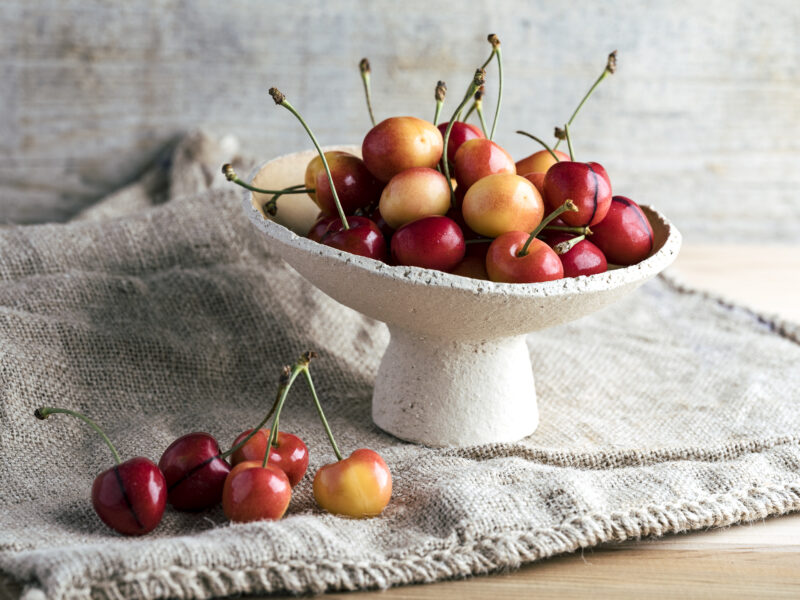
Practical information
Are you eager to taste the cherries from the Engelendael Farm? You can buy them directly at the farm on Wednesdays, Saturdays and Sundays during the months of July and August. Engelendael is located in the Belgian Meetjesland in Sint-Jan-in-Eremo, on the border with the Netherlands. For practical information or an order form, visit the website www.engelendael.be. You will also find the necessary contact information for renting the magnificent banquet hall.
For a cozy meal nearby: Roste Muis. This regional restaurant specializes in eel dishes. Opening hours and reservations at https://rostemuis.be/.
This blog is my own story and was not sponsored by the Engelendael Farm.
